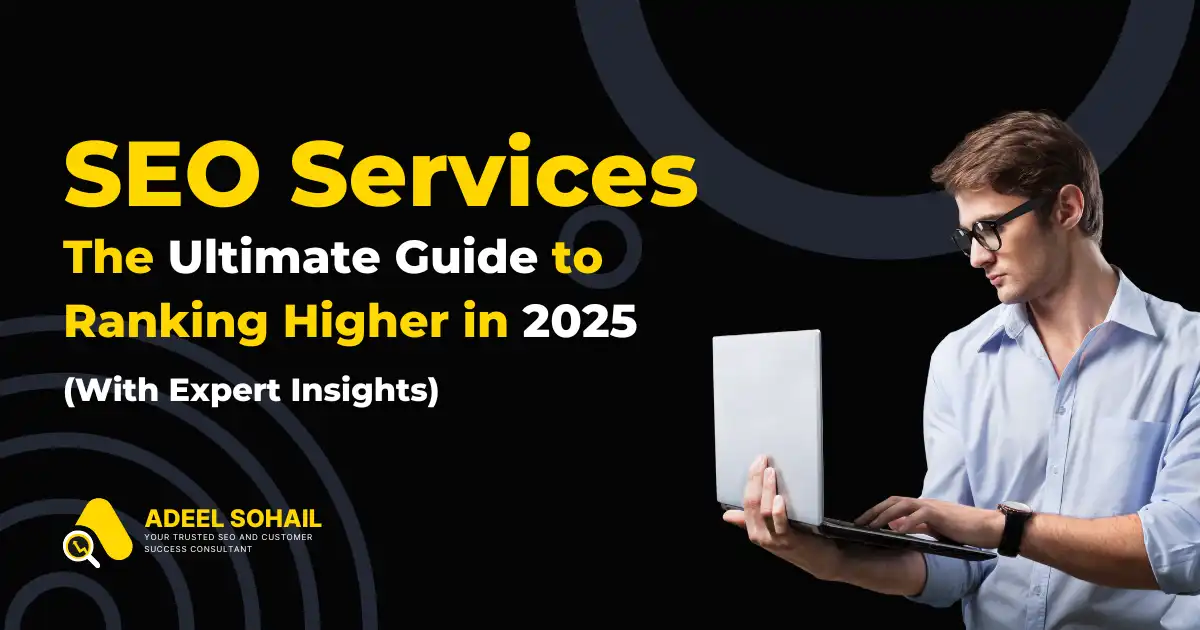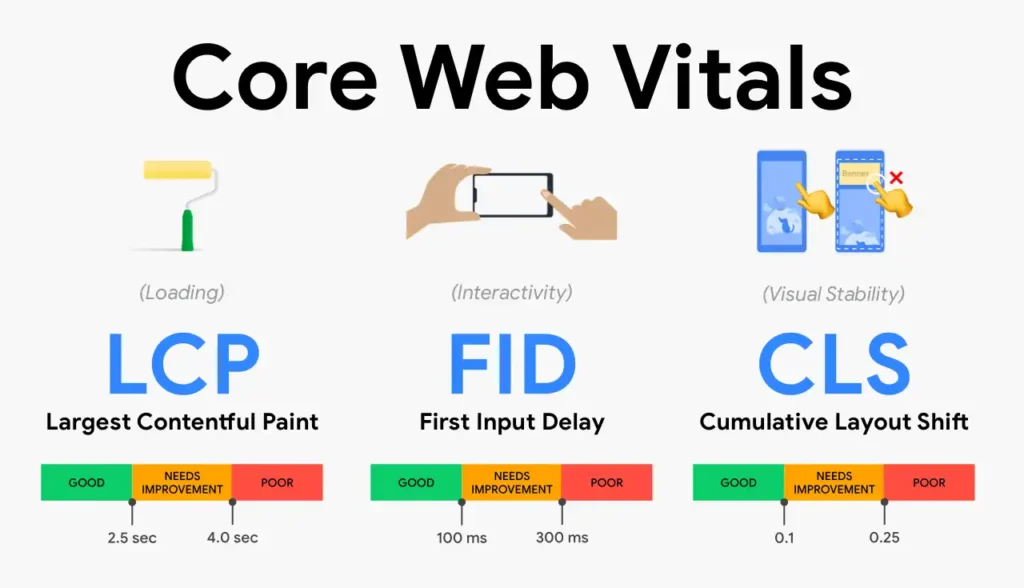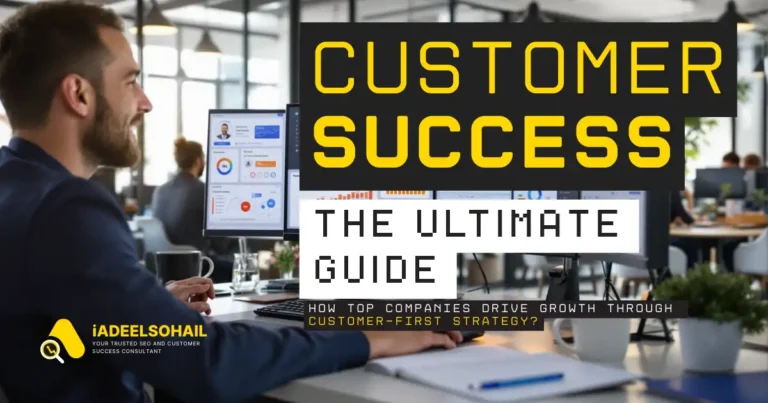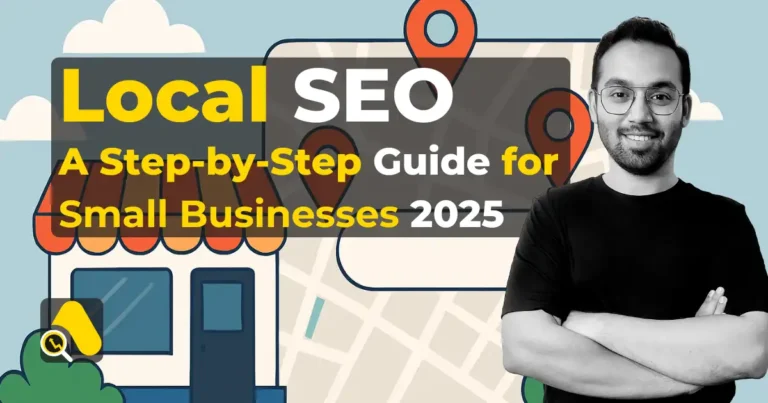SEO Services: The Ultimate Guide to Ranking Higher in 2025 (With Expert Insights)

Google commands a staggering 90.15% of the search engine market. The reality is that 60% of Google searches now end without anyone clicking on a website.
These numbers tell an interesting story. Google’s dominance in the search world makes visibility and click-through rates harder to achieve than before. The launch of AI Overviews and zero-click searches in 2024 has made traditional SEO tactics less effective.
We created this detailed guide to SEO services in 2025 to help you succeed. Your strategy needs adaptation for this new search era where experience, expertise, and authenticity are crucial. This piece covers everything from technical optimization to content creation that showcases E-E-A-T (Experience, Expertise, Authoritativeness, Trustworthiness). These elements are essential to improve your rankings effectively.
Want to reshape your SEO strategy and get more organic traffic? iAdeelSohail is here for you. So without further ado, Let’s take a closer look.
What Are SEO Services in 2025?
SEO services have grown from basic keyword optimization into sophisticated, multi-dimensional strategies in today’s digital world. Search Engine Optimization in 2025 includes specialized activities that improve website visibility in a variety of search platforms. These activities end up driving qualified traffic and conversions.
Core Components of Modern SEO Services
Professional SEO services now reach way beyond traditional search engine rankings. Search engines have become answer engines that deliver direct solutions to user queries. These services must address multiple interconnected elements:
- Technical Foundation: Website architecture optimization, mobile responsiveness, structured data implementation, and Core Web Vitals monitoring are the foundations of effective SEO. Technical excellence has become more significant since Google crawls sites less frequently to curb AI-generated content.
- Content Strategy: Content creation focuses on topic clusters instead of isolated keywords. E-E-A-T (Experience, Expertise, Authoritativeness, and Trustworthiness) determines how search engines review content quality. Detailed coverage of specific subject areas through interconnected content builds topical authority.
- User Experience: Professional SEO services must prioritize visitor interactions and website perception because user experience metrics heavily influence search rankings. Core Web Vitals measure three key factors: Largest Contentful Paint, Interaction to Next Paint, and Cumulative Layout Shift.
Rich results that showcase details like ratings and pricing have made structured data essential rather than optional. Search engines interpret content better with this code format, which improves click-through rates through more informative listings.
How SEO Services Have Evolved?
SEO services have mirrored search engines’ progress. Original SEO focused mainly on keyword density and meta tag manipulation. Ranking well often meant repeating keywords throughout webpages during this early period.
Google’s PageRank algorithm changed the field by looking at both on-page and off-page factors, especially external link quality. SEO professionals developed more sophisticated approaches as a result.
Brand focus and trust became important by 2008. Google announced site speed as a ranking factor in 2010, emphasizing user experience. The Knowledge Graph launch in 2012 marked another key moment, as focus moved from keyword strings to understanding semantics and user intent.
RankBrain (2015) and BERT (2019) applied machine learning to understand natural language queries better. This required SEO services to adapt to conversational search patterns. Mobile-first indexing became standard for all websites by 2021, making responsive design crucial for SEO strategies.
The SEO Landscape in 2025
Integration across multiple platforms defines today’s SEO landscape. Google maintains 90.15% market share, but people search everywhere—from social media to shopping sites to AI-powered search tools.
Zero-click searches make up 60% of Google queries. Content strategies must adapt to stay visible in featured snippets while driving valuable traffic. SEO in 2025 needs optimization for multiple platforms with different content requirements.
AI has transformed search results through smart content organization and customized experiences. Search engines group results into clear topic sections, allocating more space for shopping and local search results. AI search platforms like Perplexity and ChatGPT have gained prominent status.
Success in this environment requires balancing adaptability with proven fundamentals. The best strategies combine emerging AI search features with time-tested practices for lasting visibility. SEO works best when integrated with other marketing efforts, creating an integrated approach to digital presence.
The Changing Face of SEO in 2025
The SEO world of 2025 looks nothing like what came before. AI and zero-click searches have altered the map of website visibility. Anyone who wants to keep or boost their search presence needs to understand these changes.
AI’s Effect on Search Rankings
AI has transformed search results through smart content organization and individual-specific experiences. Search engines now put results into clear topic sections and give more room to shopping and local search results. This rise means SEO success depends on optimizing content across multiple platforms with different requirements.
Keyword research in 2025 goes beyond single terms. It now centers on mapping intent and understanding audiences. AI tools have changed this game by making use of information from huge datasets to find hidden chances and predict trends in minutes. Companies can now optimize their content for the right keywords to improve rankings and attract more organic traffic.
AI tools like ChatGPT, Jasper, and Writesonic have revolutionized content creation. In spite of that, human expertise remains crucial. Professional SEO services often say, “AI provides the bones, but it’s up to you to add the soul”. The best SEO strategies blend AI’s efficiency with human creativity and strategic thinking.
Google’s Search Generative Experience (now called AI Overviews) has changed how users interact with search. These AI-generated answers sit at the top of results and give complete responses without website clicks. By November 2024, AI Overviews showed up in nearly 20% of searches. Business and technology searches displayed them in more than a third of SERPs.
Zero-Click Search Adaptation
Users now find answers right on the search results page without visiting websites. SparkToro’s research shows about 60% of Google searches end without clicks. Rand Fishkin’s detailed study found that 41% of US searches got clicks. After removing clicks to Google-owned properties, only 360 of every 1,000 searches resulted in website visits.
Several SERP features drive this trend:
- Featured Snippets: Text blocks at the top of Google’s search results designed to quickly answer questions
- Direct Answer Boxes: Simple answers provided without links
- AI Overviews: Summaries that combine information from several sources
- Knowledge Panels: Information boxes that appear for entity searches
- Local Packs: Maps and business listings for location-based searches
- People Also Ask: Expandable questions related to the search query
Of course, SEO isn’t dead—it just needs a new approach. Think about these features as chances to boost your brand’s visibility and authority.
Your content should answer common questions clearly and briefly to work in this environment. Use clear headings, short paragraphs, and add schema markup to help search engines understand your pages. Target keywords that trigger local packs, featured snippets, and PAA boxes. These lead to more clicks and better brand awareness.
Technical SEO plays a crucial role in these changes. Search engine bots need to crawl and understand your site easily. Structured data, well-laid-out sitemaps, internal links, and clean code help search engines process your content better.
Understanding the SEO Strategy Framework
“The key to success with SEO is to have a clear goal and a well-defined strategy.”
— Neil Patel, Co-founder of NP Digital

A successful SEO strategy needs a well-laid-out approach with clear goals, deep competitor research, and a detailed roadmap. Random tactics give unpredictable results, while a strategic framework will give you measurable outcomes that line up with your business goals.
Setting Clear SEO Goals
Your SEO strategy’s success starts with specific, measurable goals. SEO efforts without clear objectives lack focus and direction. The best SEO professionals use the SMART framework to create goals that are Specific, Measurable, Achievable, Relevant, and Time-bound.
Your business objectives should come before specific SEO KPIs. Ask yourself what you want to achieve—driving revenue, building a brand, or launching a new product. Look at past data to measure current performance and set realistic targets. To cite an instance, if your website traffic grows steadily, you might want to increase traffic by 10% in the next year.
You should think over external factors that could affect your goals. The development team might plan a site migration or the content team could merge blog posts. These changes matter when setting expectations. Search seasonality plays a role in monthly tracking too—traffic might drop during summer or spike during holidays.
Competitor Analysis Techniques
Your competitors hold a goldmine of SEO insights waiting to be found. A deep SEO competitor analysis helps you learn what works in your industry. You can use competitors’ weaknesses, copy their strengths, and know which SEO tasks matter most.
Start by finding your true SEO competitors—not just business rivals, but websites ranking for the same keywords in organic search. Tools like Ahrefs’ Site Explorer or Keywords Explorer show these competitors based on keyword overlap.
Break down how competitors drive traffic by looking at their website architecture. This shows which content sections get the most search visits and points to opportunities for your site. To name just one example, see how a competitor’s high traffic to template sections might suggest a good content direction for you.
Content gaps—keywords where competitors rank but you don’t—offer another powerful technique. These gaps show untapped ranking potential for your site. You can also “steal” featured snippets by analyzing competitors who have them when you rank in the top 10.
Creating an Actionable SEO Roadmap
An SEO roadmap turns strategy into real action. The core team stays focused and activities remain on track. Think of it as your strategic blueprint that shows what needs to happen and when to boost search visibility.
Your roadmap should group tasks by their potential effect and needed effort. Tasks with big impact but little effort deserve top priority. Each initiative needs clear ownership to ensure accountability and help teams work together.
Standard operating procedures (SOPs) and workflows make up key parts of a good roadmap. SOPs spell out step-by-step instructions for routine tasks. Workflows organize these procedures to reach specific goals. Both help teams work consistently and achieve significant SEO goals efficiently.
Note that your SEO roadmap must stay flexible. It’s a living document that needs regular updates based on performance data and shifting priorities. Monthly reviews help you assess progress against key metrics and adjust your approach.
A well-laid-out SEO framework does more than organize your work—it turns abstract strategy into real results while every optimization effort supports your broader business goals.
Technical SEO Fundamentals
Technical excellence is the foundation of every successful SEO campaign in 2025. Search engines have become more sophisticated in how they crawl, index, and understand websites. Professional SEO services must focus on technical optimization to gain a competitive edge.
Website Architecture Optimization
A well-laid-out website architecture helps users and search engines find your content quickly. Google finds pages through links from previously crawled pages. Your internal linking strategy plays a vital role in successful indexing. The best architecture lets users reach any page in three clicks or fewer from the homepage. This approach makes crawling more effective and distributes link authority throughout your site.
Group your content by topics to provide context that helps search engines understand page relationships. This organization builds authority in specific topics and brings more organic traffic. Clean and descriptive URLs with relevant keywords make it easy for users and search engines to understand page content.
You should avoid orphan pages that don’t have internal links pointing to them because Google can’t find them easily. Regular sitemap updates and smart internal linking keep all your valuable content available to search engines.
Mobile-First Indexing Requirements
Mobile optimization has become essential in 2025. Google ranks and indexes the mobile version of your site. With 54.37% of global web traffic coming from mobile devices, your mobile site needs the same content as your desktop version.
Your mobile and desktop versions should use identical robots meta tags. Don’t use lazy-loading for main content that needs user interaction to display. Make sure both versions have matching content. Keep the same structured data on both versions and check that titles and meta descriptions are consistent across platforms.
Responsive design that naturally adapts to different screen sizes and platforms has become standard practice for professional SEO services. Regular checks with Google’s Lighthouse help you spot and fix mobile usability issues before they hurt your rankings.
Core Web Vitals in 2025

Core Web Vitals are now key ranking factors that measure real-life user experience in three main areas:
- Largest Contentful Paint (LCP): Measures loading performance—aim for under 2.5 seconds
- Interaction to Next Paint (INP): Measures responsiveness—target less than 200 milliseconds
- Cumulative Layout Shift (CLS): Measures visual stability—strive for less than 0.1
Poor scores in these metrics hurt user experience and search rankings. Google has made these thresholds stricter in 2025. Technical optimization matters more than ever. AI-based user satisfaction scores now influence how Google’s algorithms review overall site quality.
Structured Data Implementation
Structured data helps search engines understand your content better and creates rich results that catch attention in search listings. This standard format gives clear information about page content. Enhanced search features can boost click-through rates by up to 25%.
JSON-LD is the best format because it keeps structured data separate from your HTML in a script tag. This makes implementation flexible and less disruptive, especially for dynamic content on bigger websites.

Start by adding all required properties for your content type when implementing structured data. Then add recommended properties to improve visibility. Use Google’s Rich Results Test to verify your implementation for enhanced search features.
Content Optimization Strategies

“No matter how niche or mainstream your market is, great content remains a significant focus for SEO.”
— Kristopher Jones, Founder of LSEO
Quality content sits at the heart of successful SEO in 2025. Search engines now value quality over quantity. My experience with professional SEO services shows how content optimization strategies have adapted to new algorithm requirements and what users want.
Creating E-E-A-T Driven Content
E-E-A-T (Experience, Expertise, Authoritativeness, and Trustworthiness) shapes how search engines assess content quality. Simple checkboxes no longer work—search engines have become fluent in spotting content that truly helps users. Here’s what I suggest to boost your E-E-A-T profile:
- Build detailed author bio pages that showcase specific credentials related to your topic. Add links to published work and relevant certifications to prove expertise. Back up your claims with solid citations and links to trusted sources. Set up a documented fact-checking process, especially for YMYL (Your Money Your Life) topics.
- Adding “last updated” dates to evergreen content shows freshness. Getting quotes from recognized experts builds your authority through association. The person writing your content matters substantially more now than before, especially when it comes to health, finances, or safety topics.
Topic Clusters vs. Keywords

Ranking one page for one keyword is old news. Winning content strategies look at the user’s whole trip and create resources that cover different parts of a topic. A well-laid-out topic cluster has a pillar page that broadly covers a main topic, with several supporting pages that dig deeper into specific aspects.
A financial services company might create a pillar page about retirement planning. Supporting content could cover 401(k) options, IRA comparisons, and early retirement strategies. This setup tells search engines your site offers complete topic coverage and boosts your expertise.
My approach starts with picking the hub (pillar) topic. Then I create “spoke” pages that tackle related subtopics. This method builds topical authority and helps your site rank for multiple related keywords.
Video Content Integration
Video has quickly become a leading content form in the changing SEO landscape. About 87% of online marketers now create video content. This matches how people behave online, as they spend roughly one-third of their time watching videos.
I regularly add videos to boost SEO services. Videos break up text, get more engagement, and often work better than written content alone. Good video SEO needs smart implementation—note that people watch over half of all videos on mobile devices, where load times really matter.
My video optimization process ensures HTML5 compatibility, includes transcripts (helping search engines understand content), and puts video code in the footer so the rest of the site loads first. This approach maximizes SEO benefits while keeping the user experience smooth.
Link Building and Authority Development
Quality and relevance matter more than quantity when building a strong backlink profile in 2025. My years of providing professional SEO services have shown me how link building has grown from basic link getting to detailed authority development.
Ethical Link Acquisition Methods
Google’s guidelines shape how we should get backlinks through legitimate practices. High-quality backlinks serve as trust signals that show a page’s authority and value. The best way to build links now is to create content so good that people want to link to it naturally.
Guest posting still works if you do it right. The focus should be on sharing real expertise on relevant sites instead of just adding links. Resource page link building and fixing broken links are great ways to get quality backlinks while helping others.
Making linkable content has become one of the best strategies, especially data-driven pieces like statistics or original research. These pages become go-to sources that writers and bloggers naturally link to. The real difference lies in getting links from trusted, relevant websites in your field.
Brand Mentions and Citations
Brand mentions without clickable links have become much more important. Google sees these mentions as “implied links” that boost your site’s authority. SEO experts point out that Google’s Panda update made these unlinked mentions count as ranking factors.
Getting mentioned on websites of all types builds trust with Google, especially in industry-related discussions. These positive mentions work like “gold dust” for brands. They lift your image and show search engines they can trust you.
You should watch for chances to turn simple mentions into real backlinks. A friendly message to website owners can turn these mentions into valuable SEO assets.
Digital PR for SEO
Digital PR has become a smart way to build authority that goes beyond just getting links. This approach helps develop expertise, reaches buyers at key moments, and improves your online reputation.
Digital PR takes care of your whole online image, with links being just one part of the bigger picture. Reactive PR lets experts answer journalists’ questions. This works great for companies of all sizes while building expertise and trust.
Running data campaigns that match what media wants can get you valuable coverage. On top of that, it creates high-quality backlinks you can’t easily get through old-school methods. This makes digital PR vital for professional SEO services in 2025.
Local SEO Services Explained
Local SEO services are a great way to get regional search dominance for businesses that want to reach nearby customers. Search engines now prioritize results based on location, making local optimization strategies the life-blood of success for physical stores.
Google Business Profile Optimization
Your Google Business Profile (GBP) is the life-blood of effective local SEO services. This powerful listing works as a dynamic snapshot that makes it easy for potential customers to find, learn about, and connect with your business right from search results. A well-laid-out profile substantially increases your chances to show up in the Local 3-Pack—the three businesses that get prime spots in local search results.
Your GBP needs accurate and complete business information. Regular updates to business hours, quick responses to customer reviews, and high-quality photos make a real difference. Businesses with complete profiles get 70% more website visits and 50% more purchases.
Local Citation Building
Local citations—mentions of your business name, address, and phone number (NAP) online—are the foundations of local search visibility. These references help search engines confirm your business legitimacy and boost local rankings.
Citations show up in different forms:
- Structured citations on business directories like Yelp and Yellow Pages
- Unstructured citations on blogs, news sites, and other platforms
Your citations need to be consistent everywhere. Mismatched information confuses both search engines and potential customers. The core team behind professional SEO services typically manages citations to keep your NAP information consistent across platforms.
Geo-Targeted Content Strategies
Content that speaks directly to your local audience strengthens your regional search presence. Geo-targeting helps your business show up in search results for specific locations.
Local-focused content should include blog posts about community events or news, specific pages for each location, and material that connects with local interests. On top of that, it helps to add geo-tags to your website and photos so search engines can show your content to nearby users looking for relevant products or services.
SEO for Different Business Types
Different business models just need tailored SEO approaches to boost visibility and attract targeted traffic. These differences help businesses choose the most effective optimization strategies that work for their specific needs.
Ecommerce SEO Services
Ecommerce SEO helps online store websites rank higher when someone looks for products or services you offer. This approach brings steady organic traffic at lower costs than paid search and helps potential customers find your business online.
Online retailers in 2025 should focus on these priorities:
Tweak Your Text for SGE: Google’s Search Generative Experience shapes search results now. Your ecommerce business must create genuine, meaningful text that matches what users want. Product descriptions should be short but descriptive and useful. You should avoid copying content across similar items.
Structured Data Implementation: Schema markup has grown from a nice-to-have into a must-have for ecommerce sites. This code helps search engines understand content better. Rich results display details like ratings, availability, and pricing—which boost click-through rates by a lot.
Service-Based Business Optimization
Service-based businesses can really benefit from SEO. Many industries see an ROI of at least 500% from SEO services. This happens because service searches show high purchase intent—someone searching for “roof repair” likely wants to hire a roofing company right away.
Service-based businesses should:
Build dedicated service pages that show specific benefits, use appealing visuals, display customer testimonials, and include strategic calls-to-action throughout. Blog content has become vital too—create resources that answer questions about your services to build trust with future clients.
SEO for Startups vs. Established Brands
Startups compete against established brands but can use SEO to their advantage. New companies lack the authority, backlinks, and content volume that drive high rankings. This challenge becomes a chance through their quick adaptation and niche market targeting.
SEO gives startups an affordable way to generate steady organic traffic, compete with established brands, and build credibility without relying only on paid ads. They can quickly gain visibility in emerging niches by focusing on low-competition keywords before bigger competitors fill the market.
Established brands can use their existing authority and focus on maintaining complete topic coverage through connected content. Regular content updates matter a lot—content that was accurate six months ago might now hurt authority and trustworthiness.
Measuring SEO Success
SEO investment tracking needs sophisticated measurement approaches in 2025. Clear metrics help you know if your professional SEO services create meaningful business results.
Key Performance Indicators
The right KPIs that line up with your business objectives form the foundation of effective SEO measurement. Your focus should be on indicators showing actual value instead of tracking every possible metric.
Organic conversions show how well your SEO efforts drive business results when visitors from unpaid search complete desired actions. Search visibility gives you a broader view across multiple target keywords. Organic traffic shows how many people see and click through to your site.
Basic metrics aside, you should get into user engagement signals like bounce rate, scroll depth, and time on page. These measurements show if your content appeals to your audience. Businesses focused on revenue can track customer lifetime value (CLV) with cost per acquisition (CPA). This combination proves long-term ROI from SEO investments.
Attribution Models
Attribution models show how different touchpoints get credit in a user’s experience. Data-driven attribution gives credit based on how each interaction affects conversion probability. It considers features like time between interactions and format type.
First-touch attribution credits the original channel a lead found, while last-touch gives value to the final touchpoint before conversion. You can choose hybrid approaches too. Linear attribution divides credit equally, and time-decay puts more emphasis on later touchpoints.
Your sales cycle length and industry standards should guide your attribution model choice. Time-decay attribution often gives more accurate insights for industries with longer decision processes.
Reporting Frameworks
Good SEO reporting surpasses data dumps by delivering analysis and applicable information. Your reporting framework must answer four key questions: what progress have we made, what caused these changes, what should we do next, and how will this achieve our goals?
Google Looker Studio helps transform complex metrics into easy-to-understand narratives. Monthly reports give frequent updates, but quarterly frameworks capture seasonal changes and long-term trends better. This helps you make strategic decisions based on complete data rather than short-term changes.
Conclusion
SEO services have evolved significantly through 2025 as AI advances and user behaviors change. Search engines now value genuine expertise, technical excellence, and user experience more than traditional ranking factors. Your SEO success depends on a complete approach that combines technical optimization, quality content creation, and strategic link building.
Professional SEO services should adapt to zero-click searches while you retain control of organic visibility. Content strategies focus on showing E-E-A-T through expert-written articles, complete topic coverage, and authoritative backlinks. Technical basics like Core Web Vitals and mobile optimization are vital to search success.
Would you like to put these proven SEO strategies to work? Book a free 30-minute consultation to discuss what you need and explore our flexible monthly packages or complete managed SEO services. Our expertise will help your business grow through targeted organic traffic.
Your SEO success in 2025 needs constant monitoring and strategy adjustments based on performance metrics. Careful measurement of key metrics and informed improvements help businesses achieve and maintain strong organic search visibility that delivers real results.
FAQs
Q1. How has AI impacted SEO in 2025?
AI has transformed search results by organizing content intelligently and personalizing experiences. It now groups results into topic sections, giving more space to shopping and local results. AI tools have also revolutionized keyword research and content creation, though human expertise remains crucial for strategy and creativity.
Q2. What are zero-click searches and how do they affect SEO?
Zero-click searches are queries where users find answers directly on the search results page without visiting a website. They account for nearly 60% of Google searches in 2025. To adapt, SEO strategies now focus on optimizing for visibility within SERP features like featured snippets, direct answer boxes, and knowledge panels.
Q3. What is E-E-A-T and why is it important for SEO?
E-E-A-T stands for Experience, Expertise, Authoritativeness, and Trustworthiness. It’s crucial for SEO because search engines use these factors to evaluate content quality. To improve E-E-A-T, create detailed author bios, back claims with credible sources, and ensure content is written by subject matter experts.
Q4. How have Core Web Vitals evolved in 2025?
Core Web Vitals remain critical ranking factors, measuring loading performance (LCP), responsiveness (INP), and visual stability (CLS). In 2025, Google has tightened these thresholds, making technical optimization more crucial. Additionally, AI-based user satisfaction scores now influence how algorithms evaluate overall site quality.
Q5. What are the key components of local SEO in 2025?
Local SEO in 2025 focuses on three main areas: optimizing Google Business Profiles, building consistent local citations, and creating geo-targeted content. A well-optimized Google Business Profile significantly increases chances of appearing in the Local 3-Pack, while local citations help verify business legitimacy and improve local rankings.






